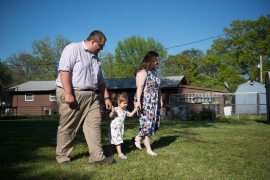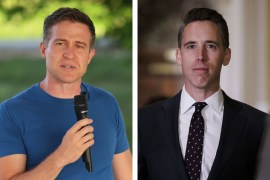PORTLAND — To get a glimpse of how the two-week-old health-insurance exchanges are faring under the Affordable Care Act, there may not be a better place to look than the Pacific Northwest and its striking contrasts.
On the one hand, the Washington state-run exchange, called Washington Healthplanfinder, is widely perceived to be off to a strong start.
Nearly 25,000 residents have enrolled in health-care coverage through Healthplanfinder over the exchange’s first two weeks, according to figures released Monday by the Washington Health Benefit Exchange, which operates the exchange.
Compare that to Oregon, where state officials acknowledge not a single resident has been able to enroll through the website of that state’s exchange, called Cover Oregon, because the site still is not fully functioning.
The state has managed to enroll a sizable number of low-income people into Medicaid over the past two weeks but has done so outside the exchange.
The contrast puts Washington and Oregon at opposite ends of the spectrum of how the newly established exchanges are working, as the uninsured and those seeking individual insurance sign up for 2014 coverage under Obamacare through March 31.
Only a handful of states, including Washington, have released enrollment figures to date. Among them are Kentucky, which announced that 8,500 residents had enrolled in the first week, and Minnesota, which reported this week that 3,700 people had enrolled.
New York said last week that 40,000 residents had completed applications, and California’s exchange reported this week that residents had started nearly 100,000 applications. Neither state has released enrollment figures.
The Obama administration also has not released enrollment figures for the 36 states that are using the federally run website, HealthCare.gov, which has been plagued with technical glitches.
In Oregon, meanwhile, state officials say it will likely take at least two more weeks before the website can process enrollments.
The delay is striking given that Oregon’s exchange has received more federal grant money — more than $300 million — than all but two other states, California and New York. Washington received $152 million.
Despite the big grant, Oregon’s exchange “is essentially closed at this point,” said Eric Graham, a partner in Lake Oswego, Ore.-based Montgomery & Graham, a brokerage with thousands of individual clients and about 1,300 business clients.
All of the firm’s 24 agents and account managers went through training and testing to become certified to enroll clients directly into the Oregon exchange but haven’t been able to enroll anyone.
“It’s really frustrating,” Graham said. “It sure started off very positively. Oregon was considered a model for other states. And to have this happen, it just boggles the mind.”
Right now, the website only allows residents to browse available plans and prices. They can enter salary and household information to get an assessment of whether they may be eligible for Medicaid or if they qualify for financial assistance to purchase a health plan. But they cannot receive an official determination, and they cannot enroll.
“We’re hoping that the full system will be up online by the end of the month for people to enroll on their own if they choose to do so,” said spokeswoman Ariane Holm.
Oregon residents who want to enroll in a private plan through the exchange can work with an insurance broker or a certified in-person assister to fill out an application to be processed later.
Cover Oregon officials say that should still leave plenty of time for Oregon residents to enroll.
People who are uninsured have until Dec. 15 to sign up for coverage to take effect Jan. 1; in this first year of Obamacare, the enrollment period will be open until the end of March, by which time those who don’t have insurance could face a penalty.
One thing going for the state’s effort is a “fast-track enrollment” drive outside the exchange to get enrollees in expanded Medicaid coverage. Oregon officials reported Thursday that 56,000 people — about 10 percent of the state’s uninsured — have been enrolled through this method using income information from the state’s food-stamp program to determine eligibility.
Still, the continuing delay in getting Oregon’s website functioning could become a problem if residents — particularly the young and healthy — begin to lose interest in signing up for coverage.
One goal of the new exchanges is to attract young and healthy people into the insurance pool to offset the higher costs of older and sicker people, said Robert Laszewski, a health-care consultant in Alexandria, Va. “But if you’re healthy and think you’re not necessarily going to need health insurance, you’re not going to put up with this — with wait times and systems down and all this,” he said.
Cover Oregon officials had anticipated technical challenges when they decided well before Oct. 1 that they would start with a “soft launch” of the website, limiting access to the online enrollment function to agents and brokers and trained in-person assisters.
But so far, not even brokers and certified assisters have been able to enroll people on the site.
Two days before the Oct. 1 launch, Cover Oregon officials disabled the enrollment function because of a high error rate in determining consumers’ eligibility for financial assistance.
The contrast from Oregon’s situation does shine a favorable light on Washington’s use of federal dollars, Laszewski said.
“Clearly, the Washington exchange did what everyone expected them to do,” he said. “They came up with an efficient exchange that was up and running on Oct. 1.”
To be sure, Washington’s Healthplanfinder was not fully functioning on the launch date and was still sluggish for several days. But it wasn’t long before site users were able to browse for health-plan information, fill in applications and enroll in plans.
Among the 25,000 who have enrolled, nearly 22,000 signed up for Medicaid coverage and more than 3,000 enrolled in private health plans through the exchange, which provides financial assistance to reduce the cost of coverage for those who qualify.
An additional 37,000 residents have gone through every step of the application except the final one, which is paying their first monthly premium, not due until Dec. 23.
Some applicants have more than one person in their household, so the number of completed applications, without the initial payment, is about 22,000.
So altogether, about 62,000 Washington residents have signed up for coverage so far through Washington Healthplanfinder, still a small dent in the estimated 1 million who are uninsured.
Exchange officials have estimated that about 130,000 Washington residents will enroll in coverage through Healthplanfinder by Jan. 1, 2014, and that 280,000 will sign up by Jan. 1, 2015.
“We’re happy where we are,” said Michael Marchand, communications director at the exchange. “It’s a great start, but there is a lot of time left, so we’ll see what happens.”






